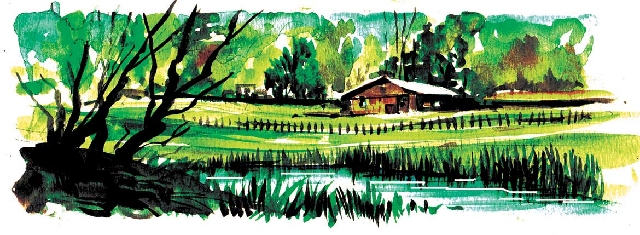Take a walk on the wild side of life at refuge
The Desert National Wildlife Refuge, just north of Las Vegas, preserves a huge area of desert and mountains as habitat for bighorn sheep and other animals and plants.
The largest refuge managed by the U.S. Fish and Wildlife Service, the preserve was created in 1936 and contains 1.6 million acres, mostly in Clark County, between U.S. Highway 95 on the west and U.S. Highway 93 on the east and extending north almost to the Pahranagat Lakes in Lincoln County.
About half of the refuge is closed to public access as part of military installations, training areas and other federal lands. The accessible half of the refuge remains much as it was when neighboring Las Vegas was a much smaller town.
It includes typical Mojave Desert valleys and rugged mountains, life-sustaining springs and a few gravel roads and rough dirt tracks. The refuge is home to a surprising variety of wildlife, including 52 species of mammals, at least 31 kinds of reptiles and about 240 kinds of birds, both residents and migrants.
The refuge welcomes about 68,000 visitors a year. The uninhabited open spaces of the Desert National Wildlife Refuge appeal to people who enjoy wildlife observation, primitive camping, horseback trail riding, cross-country hiking, photography, back-country exploration and solitude.
Most visitors approach through Corn Creek Field Station, a historic ranch and former stage stop about 25 miles from downtown Las Vegas. Drive north on U.S. 95 about 10 miles past the turnoff to Kyle Canyon. Corn Creek is about four miles from the highway on a gravel road.
Natural springs bubbling up in the shadow of the Sheep Mountains create an oasis at Corn Creek that has drawn humans and other living things since the last ice age. Long before Europeans reached this continent, native people frequented this place of running water and lush vegetation. Frontier ranchers utilized the water for farming and raising livestock. Early travel routes connecting water sources across the desert dictated where footpaths became horse trails, then wagon roads, followed by railroads and finally paved highways.
Roads beyond Corn Creek are long, dusty, sometimes rough and sketchy. Mormon Well Road, through a mountain pass, connects U.S. 95 and U.S. 93.
Flash floods late last August forced the closure of this byway for three months. It is open again, but very rough east of the mountains.
Never travel the back roads of the refuge without plenty of water, a good spare tire and the tools to change a flat. Tell a responsible person where you are headed and when you expect to return. Cellphone coverage may be poor to nonexistent. Invest in good, detailed maps.
Open year-round free of charge, the refuge is manned by a small staff and volunteers. Corn Creek provides visitors with an introduction to the refuge.
Visitor services at Corn Creek are being improved. A visitor center now under construction will include 11,000 square feet of space, an information area, exhibits, administrative offices and other amenities.
After its groundbreaking in December, the project is scheduled to be completed this winter. The construction involves the removal of some existing visitor services such as information kiosks and restrooms.
Visitors now must park below the construction area and walk a short distance to reach the old ranch’s main area and trailheads. New trails completed last fall include five interconnected short routes that explore around ponds, wetlands, creeks, orchards and pastures. The easy walking routes involve four loops ranging from one-tenth of a mile to half a mile in length. Three of the loops are wheelchair accessible.
Along one loop, an outdoor aquarium, or refugium, is the last stronghold of the diminutive Pahrump poolfish, a native of the springs at Corn Creek now federally listed as endangered. Four species of animals or plants found on the refuge are listed as either endangered or threatened, and 29 more are deemed species of concern.
Corn Creek is a popular spot for bird-watchers. The springtime flush of new greenery and tree blossoms generates a lot of activity among winged residents and visitors. Wildlife viewing is most rewarding early or late in the day.
Plan a visit soon to Corn Creek for a quick escape from urban bustle.
Margo Bartlett Pesek’s Trip of the Week column appears on Sundays.






















